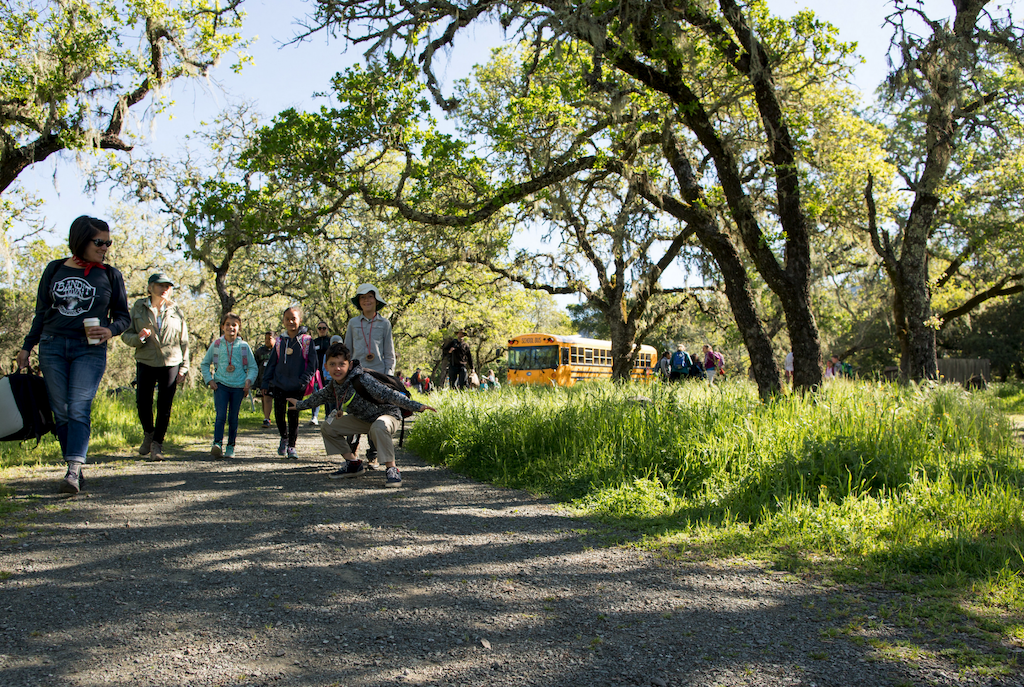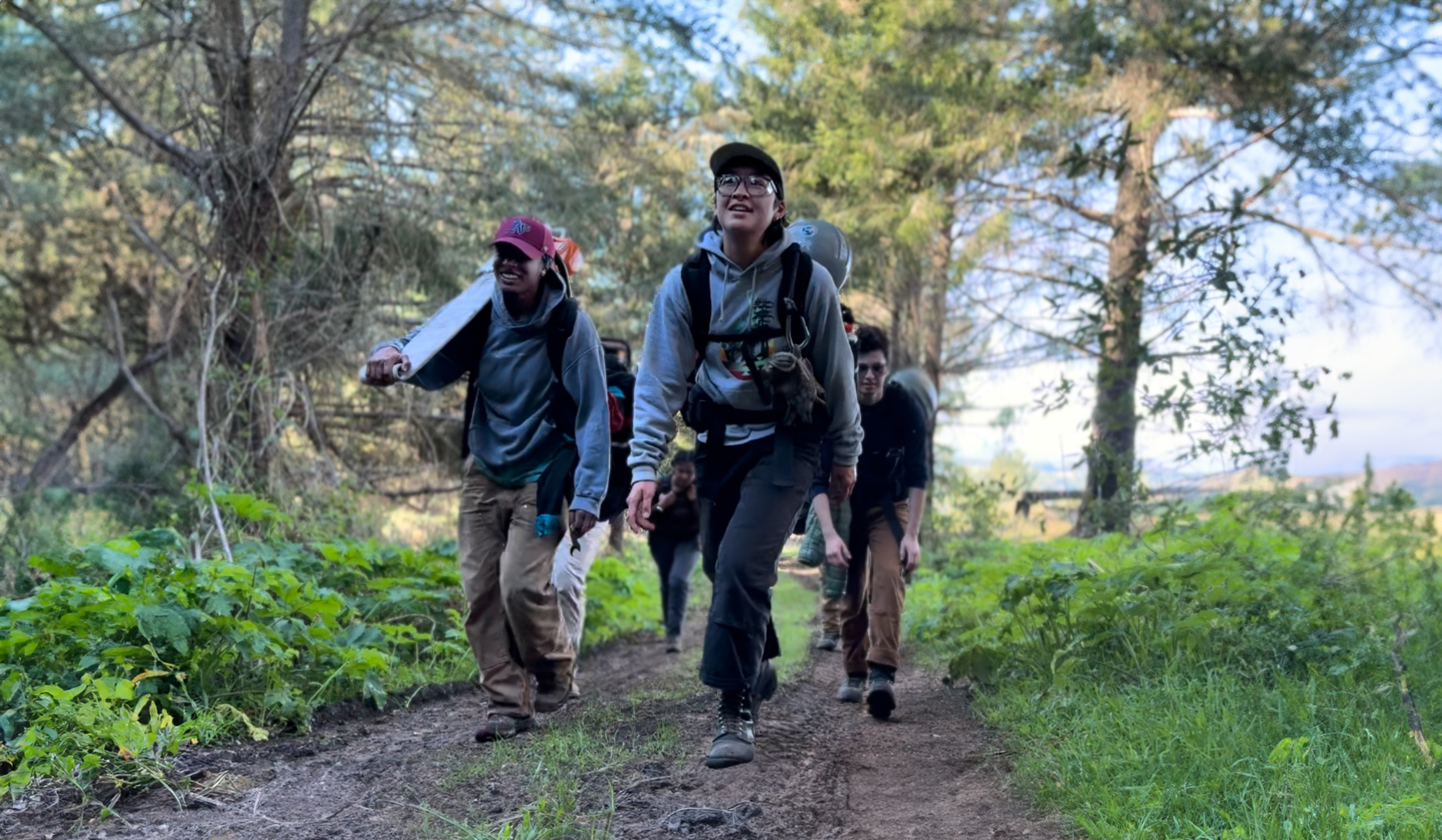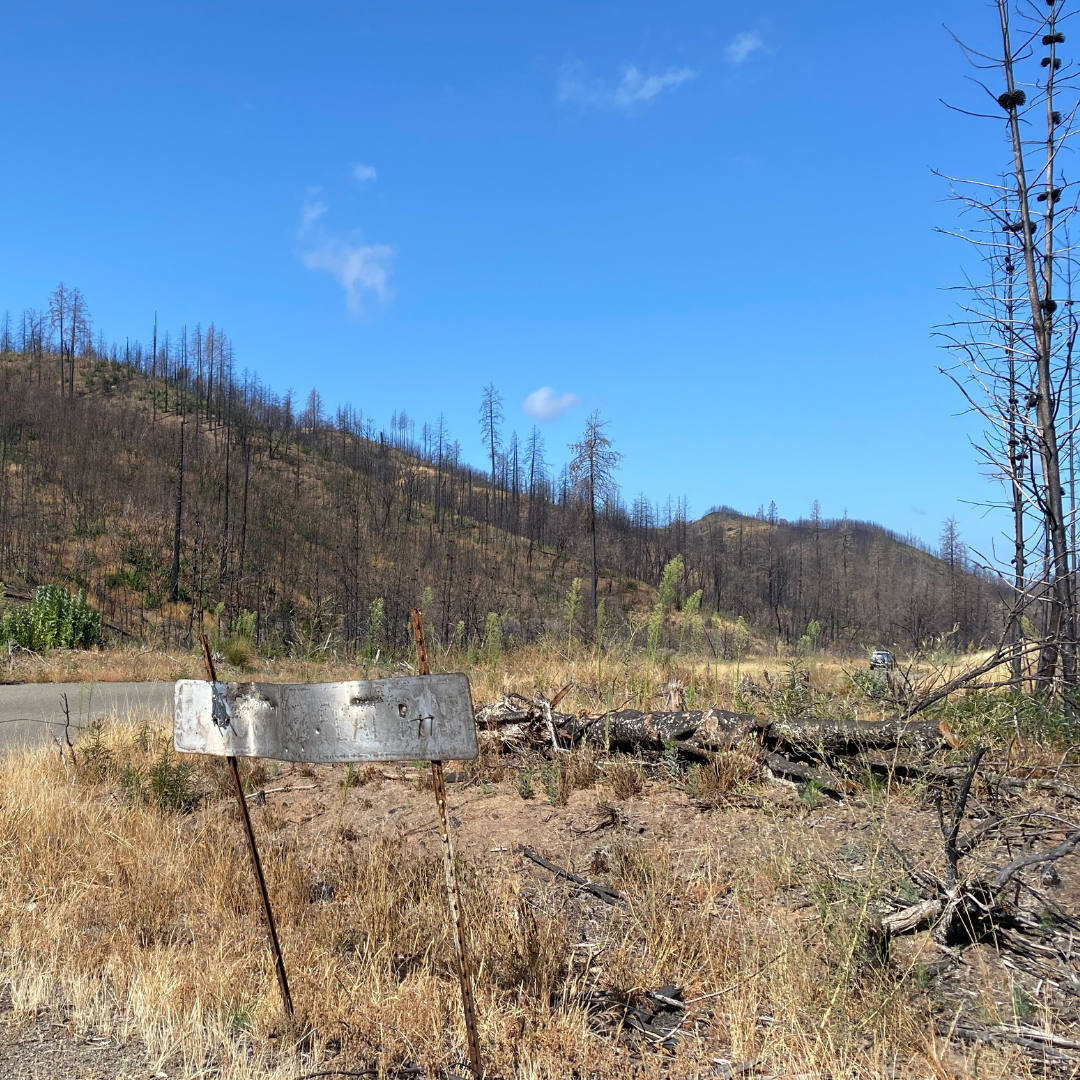On May 30 Audubon Canyon Ranch accomplished its first major controlled burn event of its Fire Ecology Program when roughly 17.5 acres of grassland and oak savannah on the Bouverie Preserve in the Sonoma Valley were targeted. The event served to further ACR’s goals of addressing hazardous fuel loads and declining ecosystem health through the coordination of cooperative, ecologically planned, scientifically monitored, and safely implemented controlled burns. The burns could not have gone better!
A cooperative event
A dozen engines and 75 personnel from Glen Ellen, Kenwood, Sonoma Valley, Eldridge, Mayacamas, and Santa Rosa local fire departments, National Park Service, and CAL FIRE worked seamlessly together, and voiced their enthusiasm for coming back to do this again. For the firefighters, this was a fantastic chance to hone their skills early in the season. The experience also helped them all practice working together cohesively, improve their communication skills, and familiarize themselves with our property in the event of a wildfire in the future. By having the park service personnel present and leading the ignitions operations, the local fire departments and CAL FIRE also had the opportunity to see and train on ecological ignition strategies for achieving ecological objectives, which is key to increasing the pace and scale of fire use in ecologically mindful ways. Having the volunteer support of Ben Jacobs, the Park Service’s retired, but most renowned controlled burn specialist, made this a fantastic training opportunity for the ignitions team as well.
Diverse observers
Key members of the Federated Indians of Graton Rancheria attended, including a representative from their sacred sites protection committee and their tribal heritage preservation officer. Tony Nelson of Sonoma Land Trust and Jeff Wilcox of Sonoma Mountain Preservation Foundation also attended and voiced their enthusiasm for the burn and future cooperation. Kevin Olson, the retired CAL FIRE statewide Chief of Training repeatedly voiced his excitement for our program, vetted the importance of cooperative and wide-scale burning, and wants to continue to be actively involved in the program.
Media folks were given the freedom to walk through the units behind the ignitions team and photograph operations. ACR received very positive coverage by KRCB radio, the Press Democrat and fire blog The Smokey Generation:
http://krcb.drupal.publicbroadcasting.net/post/controlled-burn-tests-eco-benefits-fire#stream/0 (excellent radio spot)
https://www.youtube.com/watch?v=eR-lvPuoi_8 (youtube video of the firing operation posted by the PD photographer)
http://www.pressdemocrat.com/news/7046468-181/glen-ellen-controlled-burn-rids?artslide=0 (PD article)
https://vimeo.com/220152481 (The Smokey Generation video footage)
ACR Stewardship staff collected data throughout the day
Bouverie Preserve Resource Ecologist Jennifer Potts and Modini-Mayacamas Preserves Biologist Sherry Adams led a fire behavior monitoring team that was supported by Jared Jacobs, three of our volunteer stewards and one additional fire ecologist from the Sonoma County Open Space District. The team spent the day collecting data on smoke, fire behavior, and weather, logging happenings and communications, and taking photos at established photopoints and more general photos of fire behavior across the units. This information is critical to the fire ecology program for learning from each experience, determining whether, where, and how we met our objectives, understanding what works best and what we would like to adjust, and for communicating our accomplishments to the greater public, management, and scientific communities alike.
Changing the way we live — and work — with fire
The work we are doing has profound potential to change the way we live with fire, not only in the North Bay, but throughout California, as ACR becomes a model of progressive, science based, ecologically and culturally enriching land management. We look forward to many more days like this in our future and at all of our Preserves.
Follow the story: We intend to go back into about 4 acres of oak woodland understory in the fall, which is an ecologically ideal time for controlling the native acorn weevil population to protect the acorns.
Learn more: https://egret.org/fire-ecology-program



